Safety Score: 3,0 of 5.0 based on data from 9 authorites. Meaning we advice caution when travelling to Austria.
Travel warnings are updated daily. Source: Travel Warning Austria. Last Update: 2024-08-13 08:21:03
Delve into Simmering
The district Simmering of Freudenau in Wien Stadt (Vienna) is a district located in Austria a little south-east of Vienna, the country's capital town.
In need of a room? We compiled a list of available hotels close to the map centre further down the page.
Since you are here already, you might want to pay a visit to some of the following locations: Schwechat, Vienna, Lanzendorf, Zwoelfaxing and Leopoldsdorf. To further explore this place, just scroll down and browse the available info.
Local weather forecast
Todays Local Weather Conditions & Forecast: 5°C / 41 °F
| Morning Temperature | 1°C / 34 °F |
| Evening Temperature | 6°C / 43 °F |
| Night Temperature | 3°C / 38 °F |
| Chance of rainfall | 0% |
| Air Humidity | 59% |
| Air Pressure | 1027 hPa |
| Wind Speed | Light breeze with 4 km/h (3 mph) from North-West |
| Cloud Conditions | Broken clouds, covering 79% of sky |
| General Conditions | Broken clouds |
Monday, 25th of November 2024
7°C (45 °F)
5°C (41 °F)
Overcast clouds, moderate breeze.
Tuesday, 26th of November 2024
7°C (45 °F)
5°C (42 °F)
Light rain, moderate breeze, overcast clouds.
Wednesday, 27th of November 2024
8°C (46 °F)
5°C (41 °F)
Overcast clouds, gentle breeze.
Hotels and Places to Stay
roomz vienna
Courtyard Vienna Prater/Messe
La Scala Appartement-Hotel
Hotel Spiess & Spiess Appartement-Pension
Simm's Hotel
Eitljörg Panoramaschenke
Vienna Sporthotel
Eurostars Embassy
Austria Trend Hotel Doppio Wien
Hilton Vienna Danube Waterfront
Videos from this area
These are videos related to the place based on their proximity to this place.
JUFA Wien City Hotel : Familienfreundliches Stadthotel in Wien
Mehr erfahren unter https://www.JUFA.eu Erleben Sie das JUFA Wien City Hotel, das familienfreundlichste Stadthotel Wiens. Die moderne Ausstattung und die umfangreichen Services für Familien...
JUFA Wien City Hotel - Eröffnung des familienfreundlichen Stadthotels
Mehr erfahren unter https://www.JUFA.eu Eröffnungsfeier des JUFA Wien City Hotel: Vorstellung der perfekten Ausstattung für Seminare, Veranstaltungen und Events aller Art. Das familienfreundlich...
[HD] ES 64 U2-020 mit STEC 41682 (Wien Haidestraße)
WLC ES 64 U2-020 (182 520) with special container train STEC 41682 (Dunajská Streda / SK - Wien Freudenau Hafen / A) passing Wien Haidestraße [Vienna, Austria]; 25/02/2011 WLC ES 64 U2-020.
Küchenstudio und Möbelhaus Alexander GmbH in Wien - DAN-Küchen, Küchenplanungen, Einbauküchen
http://www.firmenabc.at Zu Küchenstudio und Möbelhaus Alexander GmbH aus Wien finden Sie ein ausführliches Porträt unter http://www.firmenabc.at/moebelhaus-alexander-gmbh_FIlE ...
Saatkrähe (Corvus frugilegus) mit Kerze - Rook with candle - Simmeringer Friedhof
200.000 Saatkrähen aus Russland überwintern jedes Jahr in Wien. Sie hinterlassen auf Wiener Friedhöfen ein Bild der Zerstörung. Die Vögel fressen Kerzen, zerstören Pflanzen und verschmutzen...
Mond über Wien - Panasonic HDC-SD99
Moon over Vienna - A short test with my Panasonic HDC-SD99 1080/50p Optical Zoom 40x.
[HD] 1116 135 mit DG 56108 (Wien Haidestraße)
1116 135 with mixed freight train DG 56108 (Wien Zvbf / A -- Gmünd NÖ / A) passing Wien Haidestraße [Vienna, Austria]; 18/02/2011 1116 135 mit DG 56108 (Wien Zvbf / A - Gmünd NÖ / A)...
Videos provided by Youtube are under the copyright of their owners.
Attractions and noteworthy things
Distances are based on the centre of the city/town and sightseeing location. This list contains brief abstracts about monuments, holiday activities, national parcs, museums, organisations and more from the area as well as interesting facts about the region itself. Where available, you'll find the corresponding homepage. Otherwise the related wikipedia article.
Simmering (Vienna)
Simmering is the 11th district of Vienna, Austria . It borders the Danube and was established as a district in 1892. Simmering has several churches, some museums, schools, old castles, and many cemeteries.
Leopoldstadt
Leopoldstadt is the 2nd municipal District of Vienna. There are inhabitants (as of 2012-01-01) over 19.27 km . It is situated in the heart of the city and, together with Brigittenau (20th district), forms a large island surrounded by the Danube Canal and, to the north, the Danube. It is named after Leopold I, Holy Roman Emperor. Due to its relatively high percentage of Jewish inhabitants (38.5 per cent in 1923, i.e. before the Holocaust), Leopoldstadt gained the nickname Mazzesinsel.
Zentralfriedhof
The Zentralfriedhof (German for "Central Cemetery") is one of the largest cemeteries in the world, largest by number of interred in Europe and most famous cemetery among Vienna's nearly 50 cemeteries.
Landstraße
Landstraße is the 3rd municipal District of Vienna, Austria. It is near the center of Vienna and was established in the 19th century. Landstraße is a heavily populated urban area with many workers and residential homes. It has inhabitants in an area of 7.42 km². It has existed since approximately 1200 AD. In 1192, the English King Richard the Lionheart was captured in the Erdberg neighbourhood, after the unsuccessful Third Crusade. The name "Landstraße" means "country road".
Webster University Vienna
Webster University Vienna is the Austrian branch of Webster University, and Webster's biggest campus outside the US. It was founded in 1981, since 9 January 2001 it is accredited as Austria's third private university. It currently has about 500 students from over 70 nations enrolled in its bachelor's and master's programs. Undergraduate majors are offered in: Art and Visual Culture, Business and Management, International Relations, Media Communications, and Psychology.
Gasometer, Vienna
The Gasometers in Vienna are four former gas tanks, each of 90,000 m³ storage capacity, built as part of the Vienna municipal gas works Gaswerk Simmering in 1896–1899. They are located in the 11th district, Simmering. They were used from 1899 to 1984 as gas storage tanks. After the changeover from town gas to natural gas between 1969 and 1978, they were no longer used and were shut down. Only the brick exterior front walls were preserved. The structures have found a new use in modern times.
Ernst-Happel-Stadion
The Ernst Happel Stadium (Praterstadion until 1992, sometimes also called Wiener Stadion) in Leopoldstadt, the 2nd district of Austria's capital Vienna, is the largest stadium in Austria. It was built between 1929 and 1931 for the second Workers' Olympiad to the design of German architect Otto Ernst Schweizer. The stadium was renamed in honour of Ernst Happel following his death in 1992.
Wiener Linien
Wiener Linien (Vienna Lines) are the company running the largest part of the public transit network in the city of Vienna, Austria. They are part of the city corporation Wiener Stadtwerke Holding AG.
St. Marx Cemetery
St. Marx Cemetery (Sankt Marxer Friedhof) is a cemetery in the Landstraße district of Vienna, used from 1784 until 1874. It contains the unmarked burial of the famous composer Wolfgang Amadeus Mozart.
Sigmund Freud University Vienna
Located in Vienna, Austria, the Sigmund Freud University (SFU) was accredited as a private university by the Austrian Accreditation Council in August 2005. As a university in the field of Human Sciences, SFU specializes in Psychotherapy Science and Psychology. Professor Alfred Pritz serves as Director of Sigmund Freud University, and Professor Giselher Guttmann serves as Academic Dean.
Rotunde
The Rotunde in Vienna was a building erected for the Weltausstellung 1873 Wien (the Vienna World Fair of 1873). The building was a partially covered circular steel construction, 84 m (approx. 275 ft) in height and 108 m (approx. 354 ft) in diameter. For almost one century (followed after its own destruction by an exhibition hall in Belgrade, 1957) it was the largest cupola construction in the world, larger than the Pantheon in Rome (diametre 43,4 m); built in 118–125.
Simmering-Graz-Pauker
Simmering-Graz-Pauker AG (SGP) was one of the most important Austrian industrial conglomerates, which used to have several thousand employees all around the world.
Palais Rasumofsky
Schweizerhaus
The Schweizerhaus is a Viennese restaurant, rich in tradition, that is inseparably linked with the Prater, a large public area and park in Vienna, Austria's capital.
T-Center
The T-Center is an office building in the Sankt Marx section of Landstraße, the 3rd district of Vienna. It was built between the years 2002 and 2004 following the designs of Austrian architect Günther Domenig.
Arsenal (Vienna)
The Arsenal is a former military complex of buildings in the south-east of Vienna in the third district. Several brick buildings in a rectangle layout make up the complex which is located on a bank south of the Landstraßer Gürtel. It is the most distinguished building group of the romantic historism in Vienna and has been constructed in Italian-medieval respectively Byzantine-Islamic style.
Bohemian Prater
The Bohemian Prater is a small amusement park at the edge of Vienna. It dates to the second half of the 19th century, and some of the rides are more than 100 years old. The name is derived from the larger Wiener (Viennese) Prater. On 11 December 1944, during World War II, the Bohemian Prater was almost completely destroyed by a bomb attack. The centre of the Bohemian Prater forms the meeting centre Tivoli.
Haus Wittgenstein
Haus Wittgenstein, also known as the Stonborough House and the Wittgenstein House) is a house in the modernist style designed and built on the Kundmanngasse, Vienna, by the Austrian architect Paul Engelmann and the Austrian philosopher Ludwig Wittgenstein. In November 1925, Wittgenstein's sister Margaret Stonborough-Wittgenstein commissioned Engelmann to design and build a large townhouse.
Prater Liliputbahn
The Prater Liliputbahn is a 381 gauge light railway in Vienna, Austria. Opened in 1928, and extended in 1933, the railway operates primarily as a tourist attraction, but also providing transport links around the wider area of the Prater park, the amusement park, and the sports stadium. Although a year-round service was provided for many years, it is now more common for the railway to close during the months of December, January, and February.
Ostbahnbrücke
The Ostbahnbrücke is a railway bridge over the Donaukanal in Vienna. It unites the districts of Simmering and Leopoldstadt. The Ostbahnbrücke is located near the power station in Simmering and the Gasometer.
Ferry-Dusika-Hallenstadion
The Ferry-Dusika-Hallenstadion is an indoor arena in Vienna, Austria. It was built in 1976, holds 7,700 spectators and is hosts indoor sporting events such as track cycling, tennis and athletics. It hosts an annual indoor track and field meeting – the Vienna Indoor Classic.
Webster University Geneva
Webster University Geneva is the Swiss campus of Webster University, and Webster's second biggest outside the United States. It was founded in 1978. It currently has about 600 students from over 90 nations enrolled in its bachelor's and master's programs. The degrees of Webster University Geneva are accredited in the United States (via the accreditation of Webster University in the state of Missouri) as are some in Switzerland.
Museum of Art Fakes
The Museum of Art Fakes is a museum of faked and forged artworks that opened in Vienna, Austria in 2005. This small, privately run museum in the Landstraße district is the only one of its kind in the German-speaking world. The exhibits include works by the renowned Vermeer-forger Han van Meegeren and the British art restorer Tom Keating, who claimed to have faked over 2,000 works by more than 100 different artists and deliberately inserted "time bombs" and anachronisms into his paintings.
Neugebäude Palace
Neugebäude Palace is a former imperial residence in Vienna, Austria. It was constructed for Maximilian II, Holy Roman Emperor on the site of the tent city of the invading Turks of 1529 and apparently modeled after it. It fell into disuse later on and today stands in ruins. There are various efforts to restore the site.
Pietro Nobile
Pietro Nobile was an Italian Neoclassicist architect and builder born in Capriasca, Italy, 11 November 1774 – Vienna, Austria, 7 November 1854. He is regarded as one of the most prominent architects of the late classicism in Vienna and the leading architect of the Habsburg court. His father moved the family to Trieste where the young Pietro attended school. He continued to be educated in Rome by Antonio Canova between 1801 and 1806.


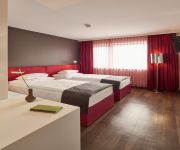

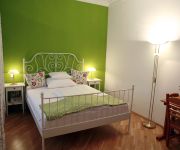
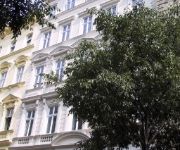
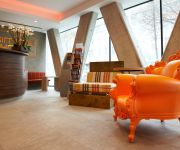

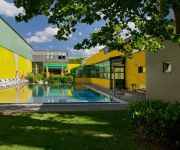
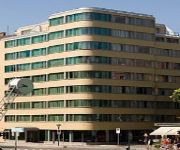
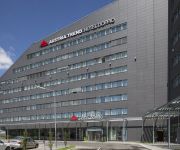






!['[HD] ES 64 U2-020 mit STEC 41682 (Wien Haidestraße)' preview picture of video '[HD] ES 64 U2-020 mit STEC 41682 (Wien Haidestraße)'](https://img.youtube.com/vi/Q95ndG7ducA/mqdefault.jpg)




!['[HD] 1116 135 mit DG 56108 (Wien Haidestraße)' preview picture of video '[HD] 1116 135 mit DG 56108 (Wien Haidestraße)'](https://img.youtube.com/vi/4UGl8xJBbEI/mqdefault.jpg)






